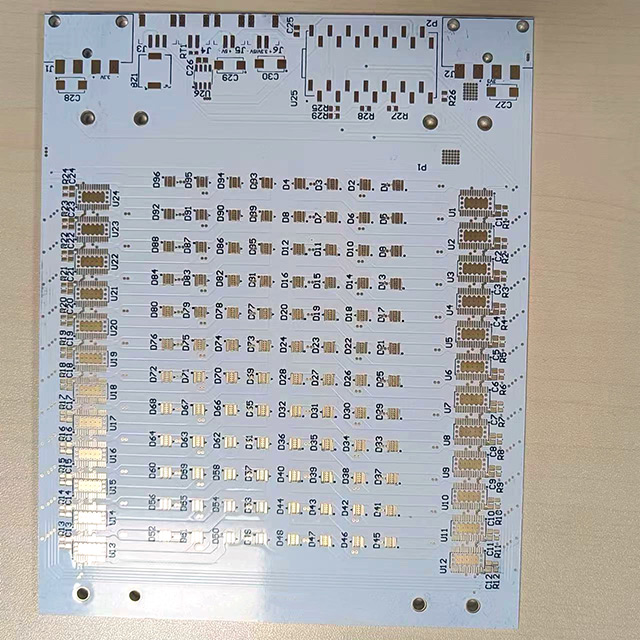Yes, that's right. It's 230V on those so you could use a 230V from a link in programmer. Either way. ( Double check it is 230v, I'm sure it is but not looked at a Worcester for a few week ).So looking at manual I believe I need to take the Ls to the common of the receiver, and the Lr comes from the NO of the receiver to the Lr on the boiler. Would this be right?
-
Pro's OnlyElectricians Arms Electrician Talk How to Access The Arms Domestic Electrician Industrial Electricians Wiring, Theories, Regulations Engineering Chat Periodic Testing Problems Electricians Downloads Commercial Electricians Security (Access-Only) Access Private Area Business Related Advice Certification Schemes Electrical & PAT Testing
-
Please use style selector to select BLUE AND WHITE. If you are not already on it. This notice will go once you're on the correct style.
You are using an out of date browser. It may not display this or other websites correctly.
You should upgrade or use an alternative browser.
You should upgrade or use an alternative browser.
H
hightower
Just trying to get my head around CH in general, so with this being 230v does that mean I don't need to take the feed from the boiler's Ls and Ns terminals, and can take it from a suitable feed, and then just provide it with a Lr at 230v?
I know this probably won't be practical, just trying to get my head around the theory.
I know this probably won't be practical, just trying to get my head around the theory.
Just trying to get my head around CH in general, so with this being 230v does that mean I don't need to take the feed from the boiler's Ls and Ns terminals, and can take it from a suitable feed, and then just provide it with a Lr at 230v?
I know this probably won't be practical, just trying to get my head around the theory.
Yes. Sometimes is easier depending on how many cores in flex/cable etc.
It's no prob if it's 230V .
H
hightower
Yes. Sometimes is easier depending on how many cores in flex/cable etc.
It's no prob if it's 230V .
So when and why is 24v or volt free contacts used, if you don't mind me asking?
H
hightower
So, I think by volt free that doesn't mean there's no voltage on the contacts, just that the voltage is separate from the mains voltage. So, a solenoid that is switched open and shut by the 230v mains, but the contacts on switch are separate and therefore can be any voltage you need? Am I thinking about this correctly?
Therefore, if the boiler takes 230v on the switch you can just link the 230v of the supply to the solenoid to the common, and that way it will send 230v up it when it is closed? However, if the device to be switched need a lower voltage, you instead apply that to the common terminal so that the correct voltage is returned when it is closed?
I think I'm slowly getting my head around this, it's the naming of "volt free" that threw me off.
Why would a boiler not want 230v on the switch, I mean, why would a boiler need a 24v return to switch it? Can you give me an example of a boiler that uses this so I can download the manual and take a look?
Therefore, if the boiler takes 230v on the switch you can just link the 230v of the supply to the solenoid to the common, and that way it will send 230v up it when it is closed? However, if the device to be switched need a lower voltage, you instead apply that to the common terminal so that the correct voltage is returned when it is closed?
I think I'm slowly getting my head around this, it's the naming of "volt free" that threw me off.
Why would a boiler not want 230v on the switch, I mean, why would a boiler need a 24v return to switch it? Can you give me an example of a boiler that uses this so I can download the manual and take a look?
So, I think by volt free that doesn't mean there's no voltage on the contacts, just that the voltage is separate from the mains voltage. So, a solenoid that is switched open and shut by the 230v mains, but the contacts on switch are separate and therefore can be any voltage you need? Am I thinking about this correctly?
Therefore, if the boiler takes 230v on the switch you can just link the 230v of the supply to the solenoid to the common, and that way it will send 230v up it when it is closed? However, if the device to be switched need a lower voltage, you instead apply that to the common terminal so that the correct voltage is returned when it is closed?
I think I'm slowly getting my head around this, it's the naming of "volt free" that threw me off.
Why would a boiler not want 230v on the switch, I mean, why would a boiler need a 24v return to switch it? Can you give me an example of a boiler that uses this so I can download the manual and take a look?
https://www.google.co.uk/url?sa=t&r...47.pdf&usg=AFQjCNEEZPLuEg435Gdc-mejUBX16zKfbg
Have a look at Vaillant. All three ideas/methods are available with those.
There's 230V, 24V and ebus. ebus is specific to Vaillant.
As far as volt free goes, that is a funny thing to get your head around. I always think of it as a circuit that doesn't actually run anything by itself, directly.
In my case a volt free circuit normally includes a PCB. So the switching is done via components on that board like transistors, relays etc. Things like volt free switching on a room stat would just close a circuit for the board to recognise.
Some say that volt free is Free, as in Free like non specific.
H
hightower
Well I read one article that said volt free just means the relay contacts are separate (free) from the supply voltage. Then I read another article saying volt free means exactly that, there isn't a voltage sitting present but some circuit board wizardry is watching the cable for continuity - and when the switch is closed it picks up on the continuity and acts on it.
H
hightower
Thanks for that link, very helpful. Just looking through and on page 27 it says not to use 7,8,9 (20v) terminals in the UK.
Wizardry ......Yep that's it.Thanks for that link, very helpful. Just looking through and on page 27 it says not to use 7,8,9 (20v) terminals in the UK.
another subject all together.
Leesparkykent
Nearly Esteemed
The controls should really be fed from the LS terminal within the boiler so they are protected by the internal fuse. This way its connected in accordance with the manufacturers instructions.
The controls should really be fed from the LS terminal within the boiler so they are protected by the internal fuse. This way its connected in accordance with the manufacturers instructions.
Not all MF's say that and the only thing that should be supplied via that particular circuit is the switching of it.
So in the case of a Programmer, you wouldn't run the L N supply to a programmer from the boiler and definitely not from that source, so you wouldn't be protecting the control itself with the internal fuse anyway !
The switch circuit ( in this case Lr Ls ) is to tell the board to fire the boiler. The boilers internal functions and components e.g. Pump, fan etc are powered via the permanent live supply.
Leesparkykent
Nearly Esteemed
Hightower says its a worcster bosch 25si so yes the programmer should be fed from the LS/230V out terminal if you follow the manufacturers instructions/diagrams.Not all MF's say that and the only thing that should be supplied via that particular circuit is the switching of it.
So in the case of a Programmer, you wouldn't run the L N supply to a programmer from the boiler and definitely not from that source, so you wouldn't be protecting the control itself with the internal fuse anyway !
The switch circuit ( in this case Lr Ls ) is to tell the board to fire the boiler. The boilers internal functions and components e.g. Pump, fan etc are powered via the permanent live supply.
Last edited:
Hightower says its a worcster bosch 25si so yes the programmer should be fed from the LS/230V out terminal if you follow the manufacturers instructions/diagrams.
It does say that, you would however be running the Programmer via the board which I personally don't like the idea of for numerous reasons.
I prefer the programmer to take it's supply from the system wiring. If you ring Worcester tech, they'll tell you its a suggested way of doing it, not a must. It is a provision they make. There is more than one way to skin a cat. There is no harm in feeding a switched live to the boiler Lr.
Similar threads
H
- Replies
- 0
- Views
- 188
H
OFFICIAL SPONSORS








These Official Forum Sponsors May Provide Discounts to Regular Forum Members - If you would like to sponsor us then CLICK HERE and post a thread with who you are, and we'll send you some stats etc


